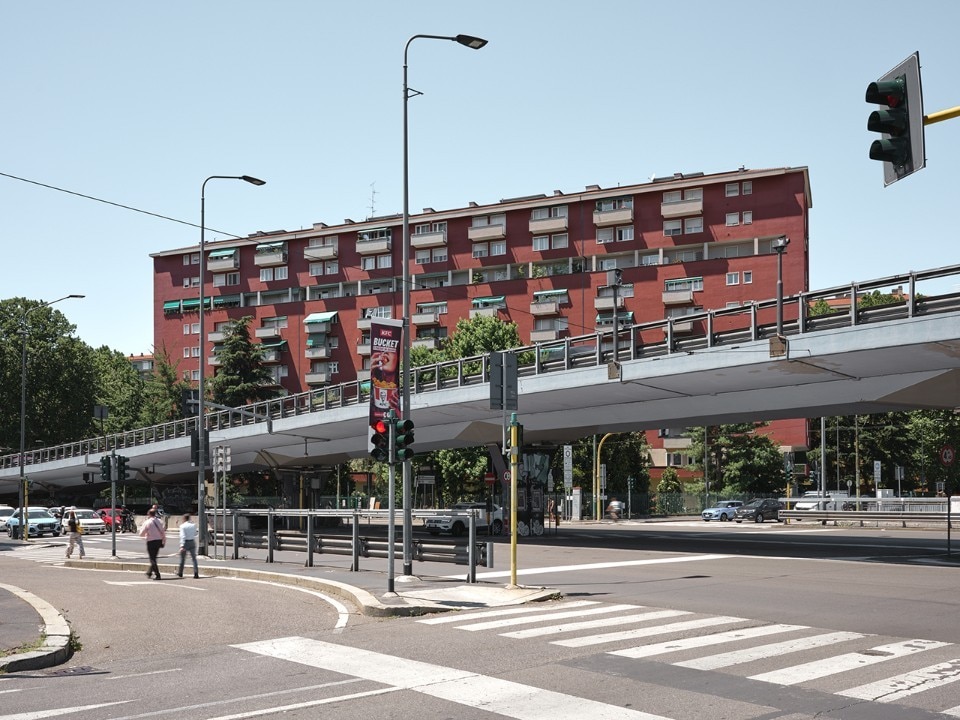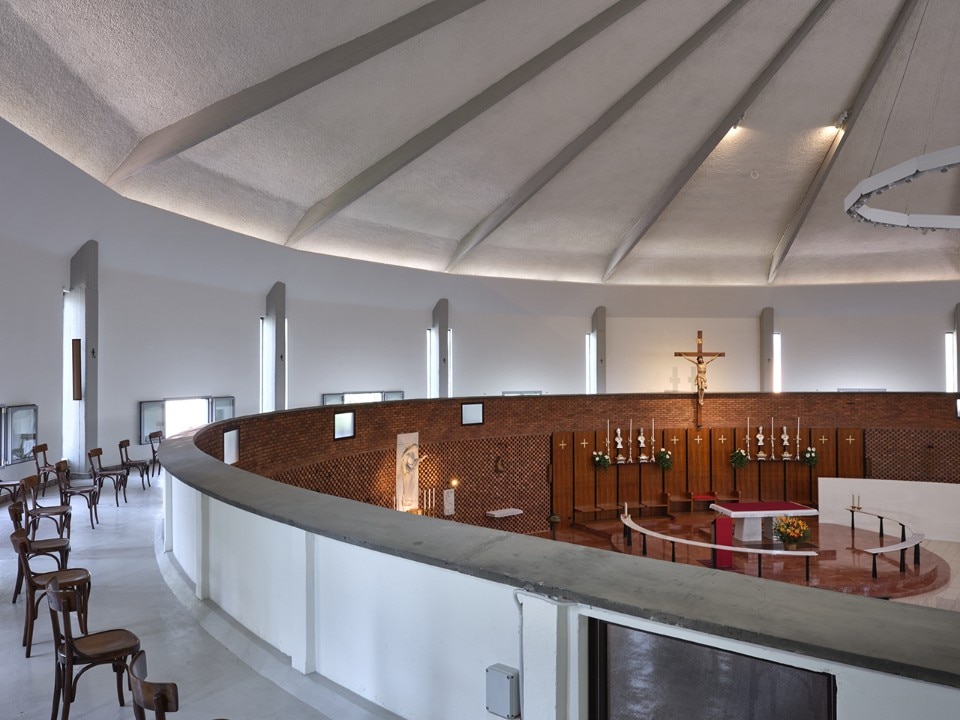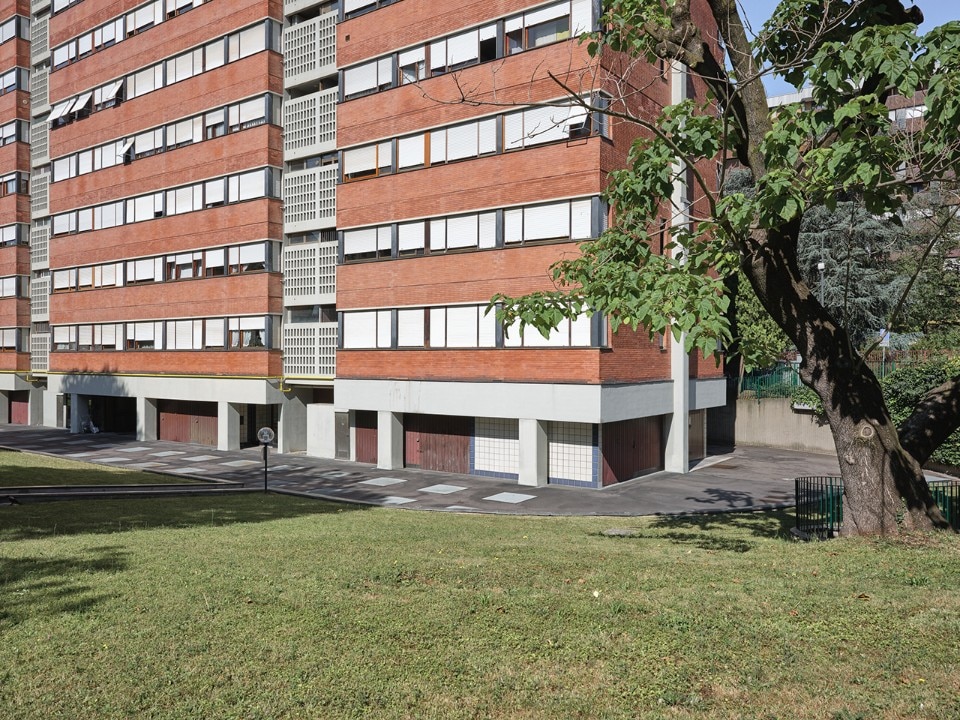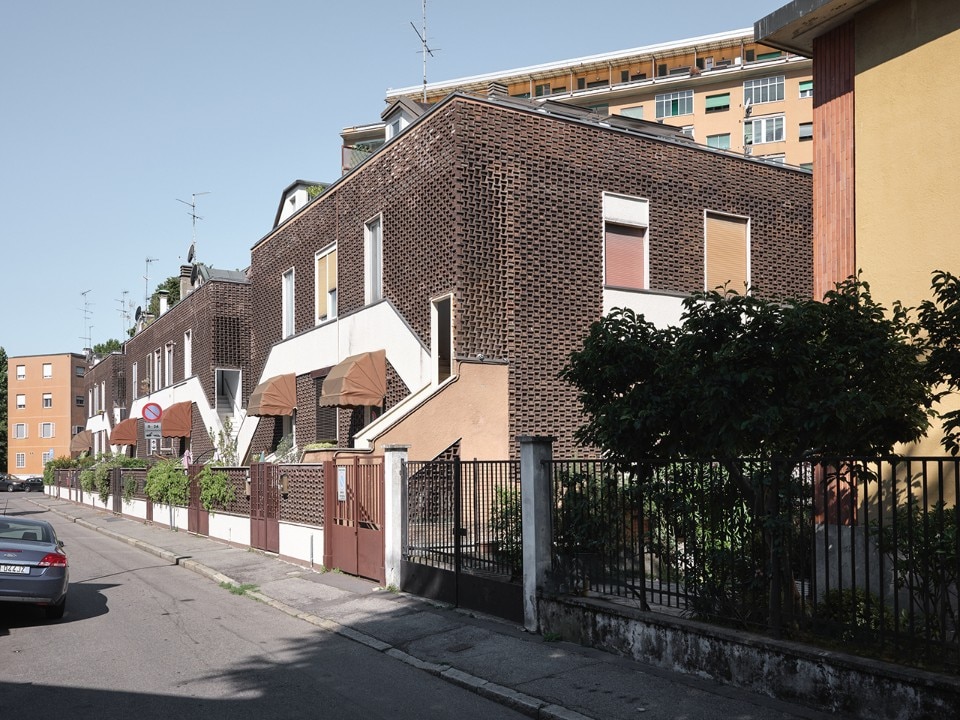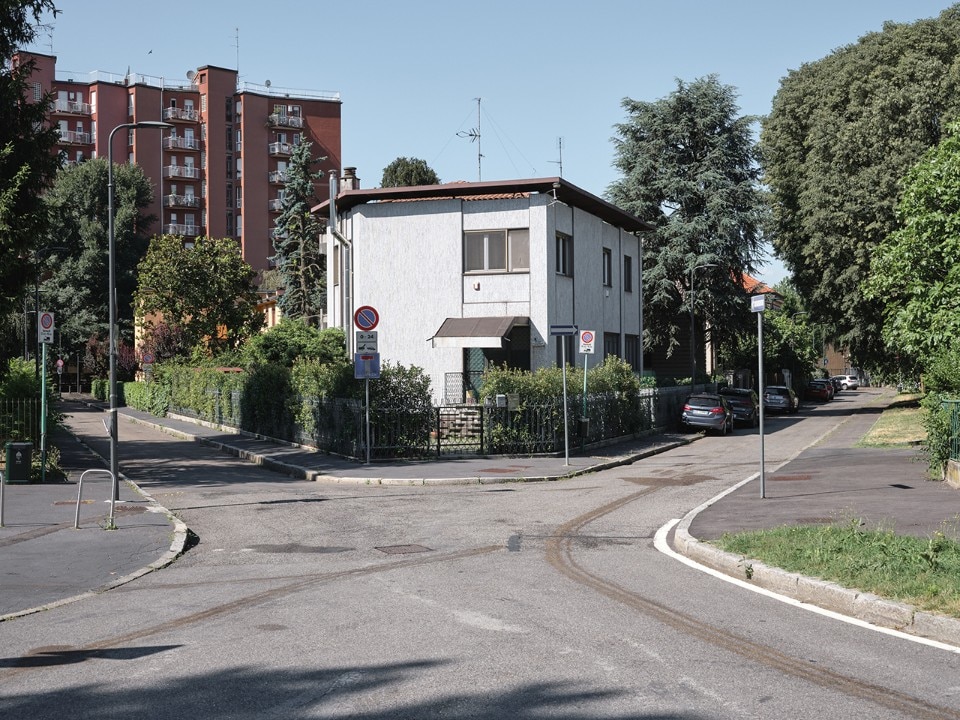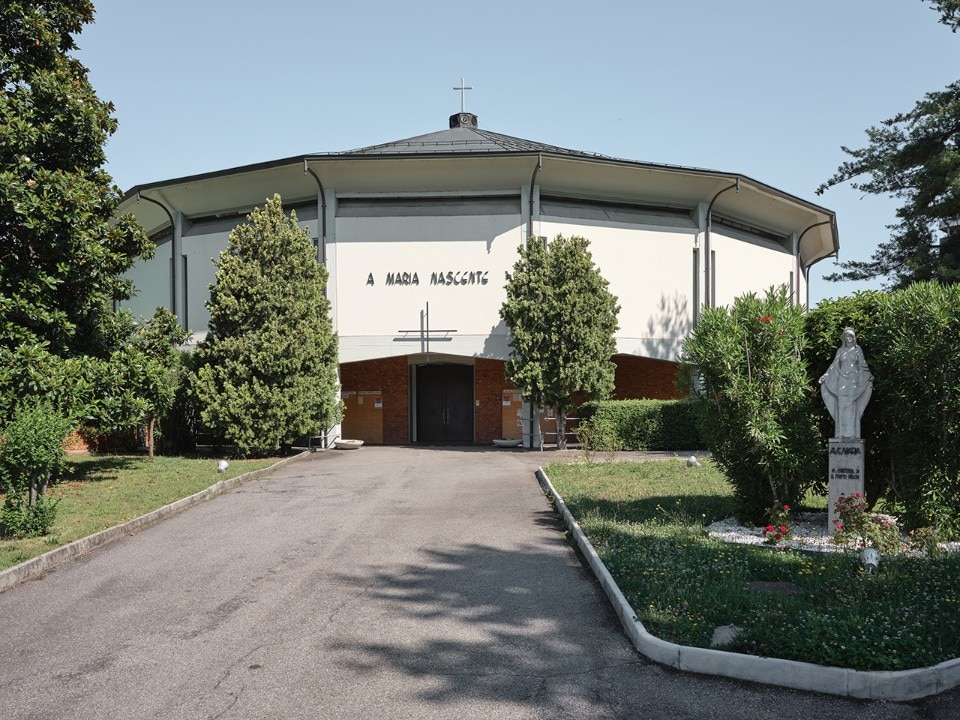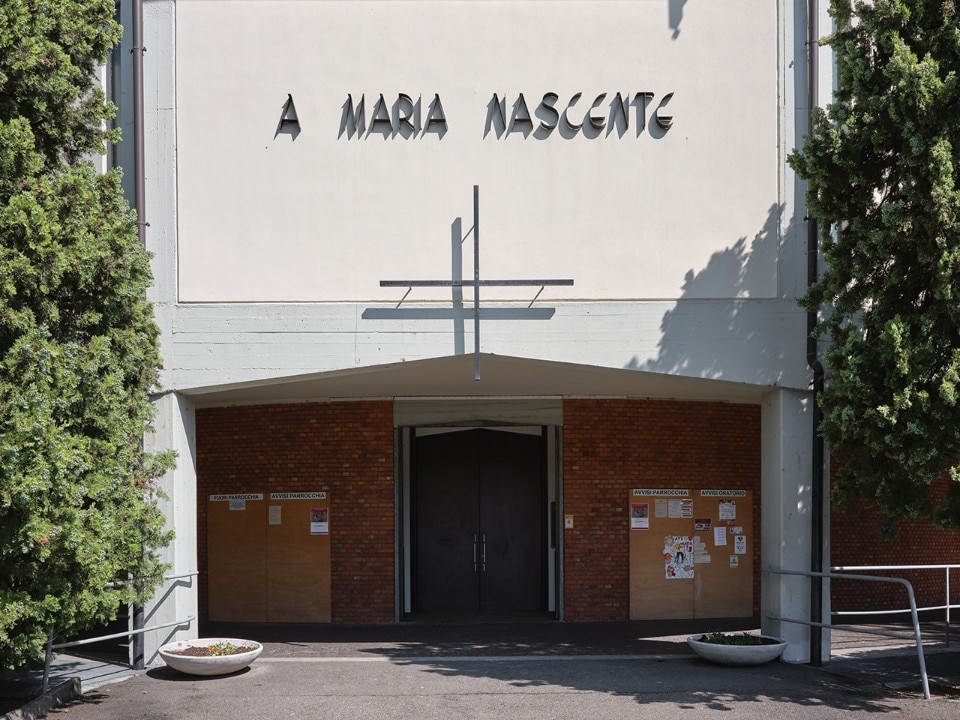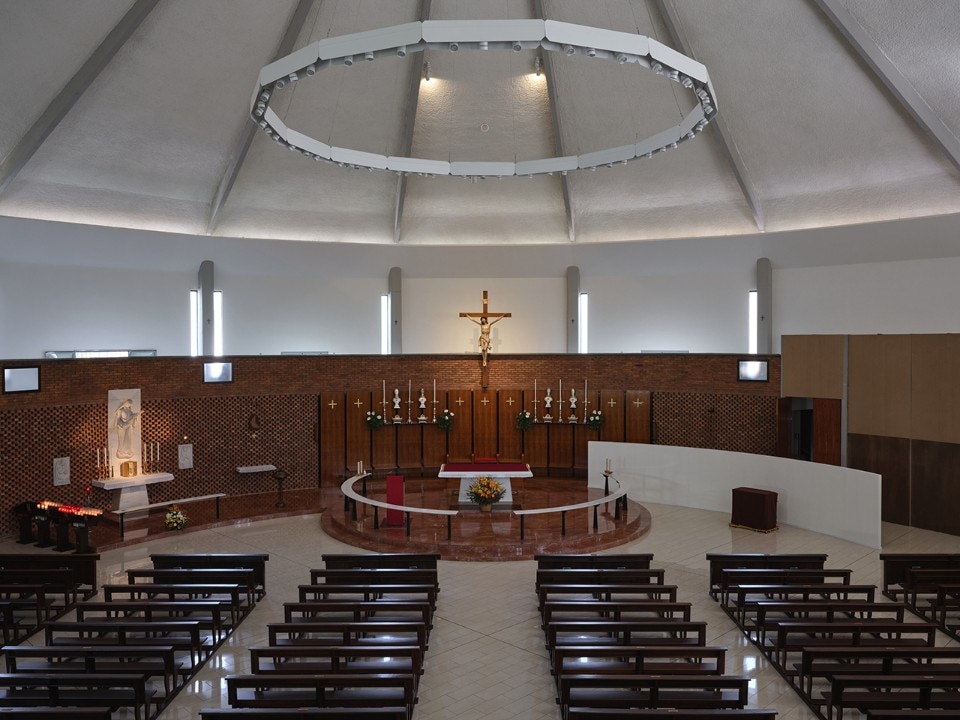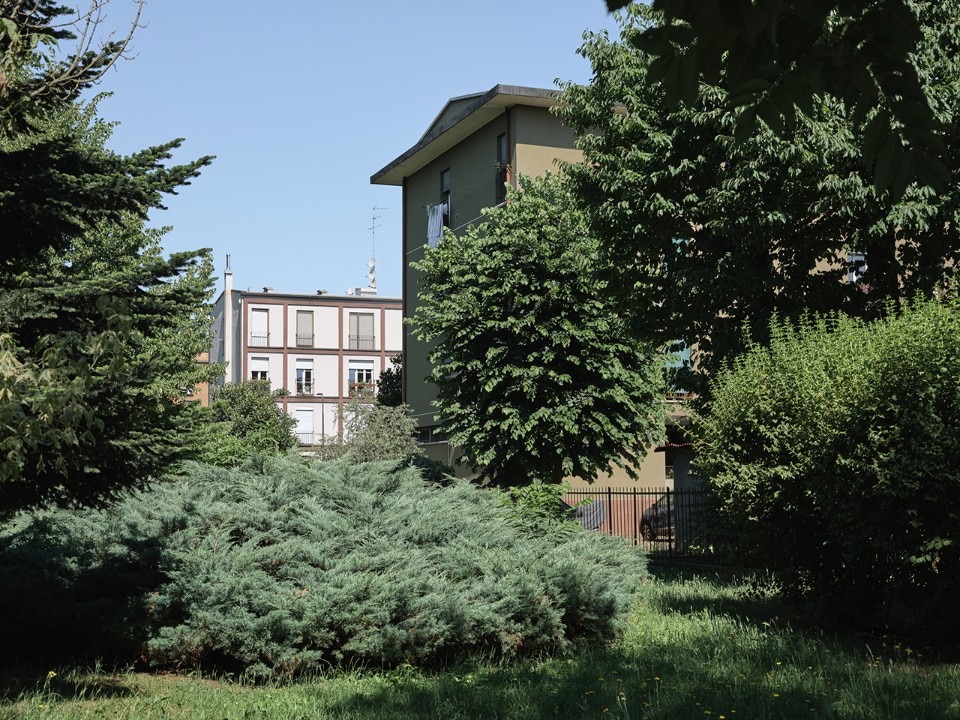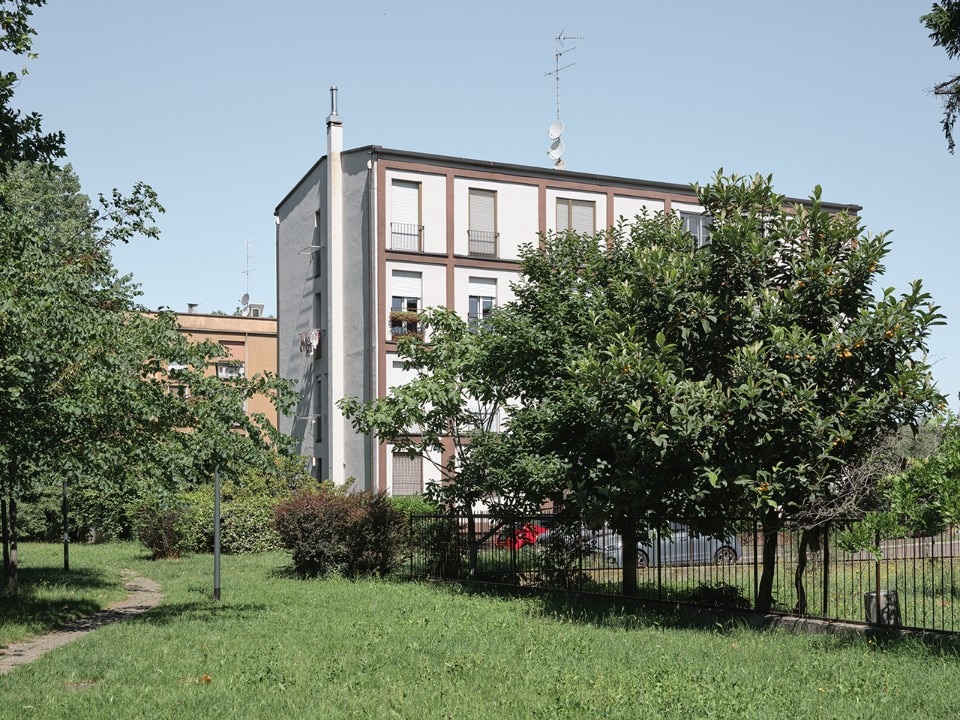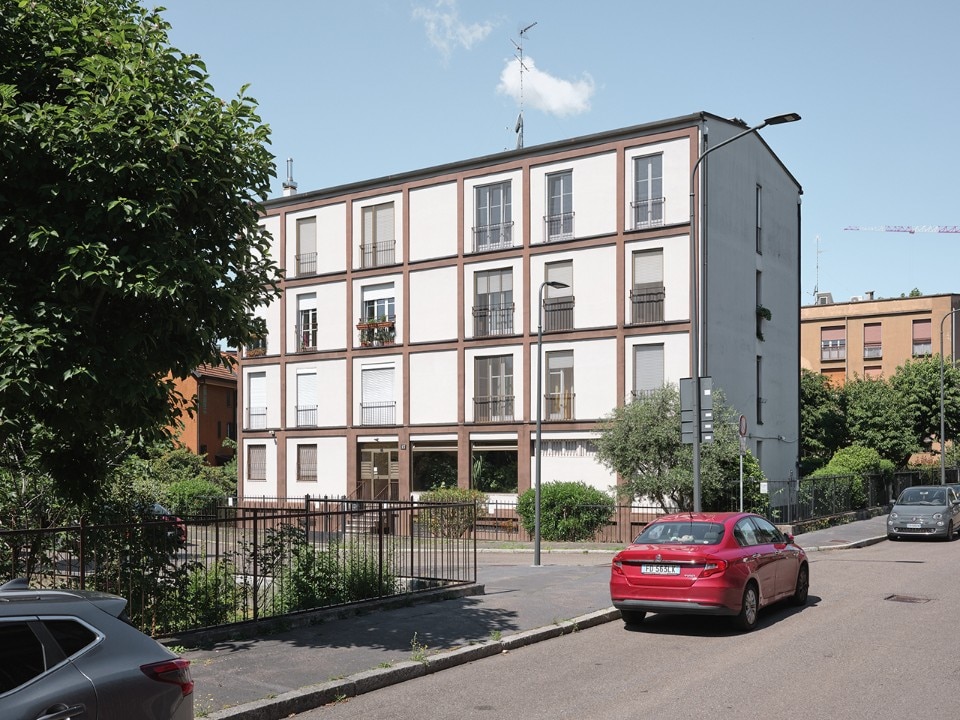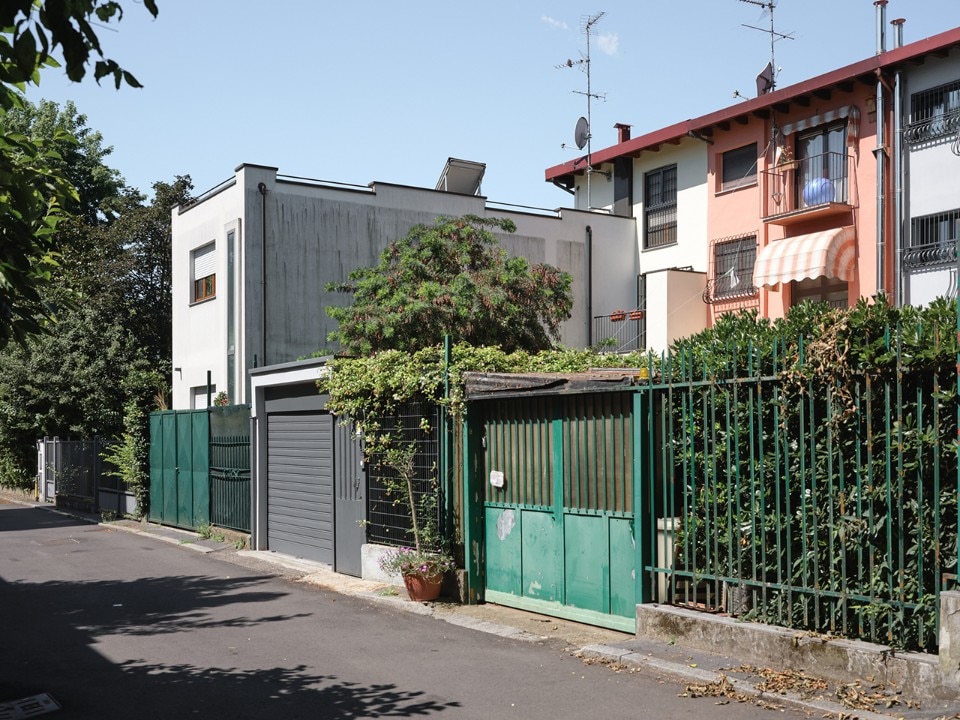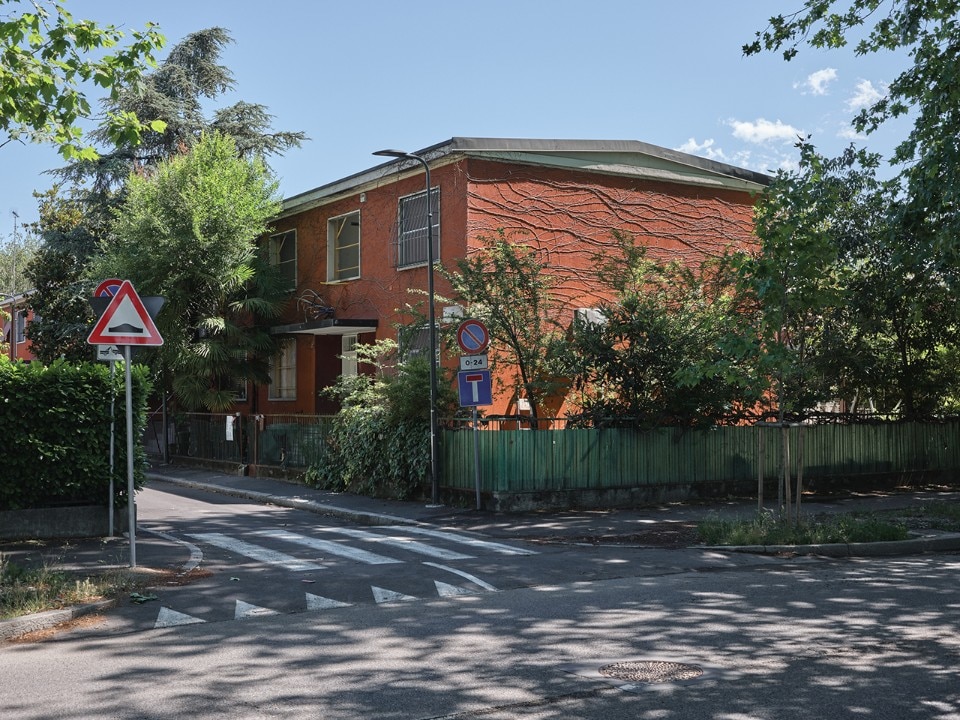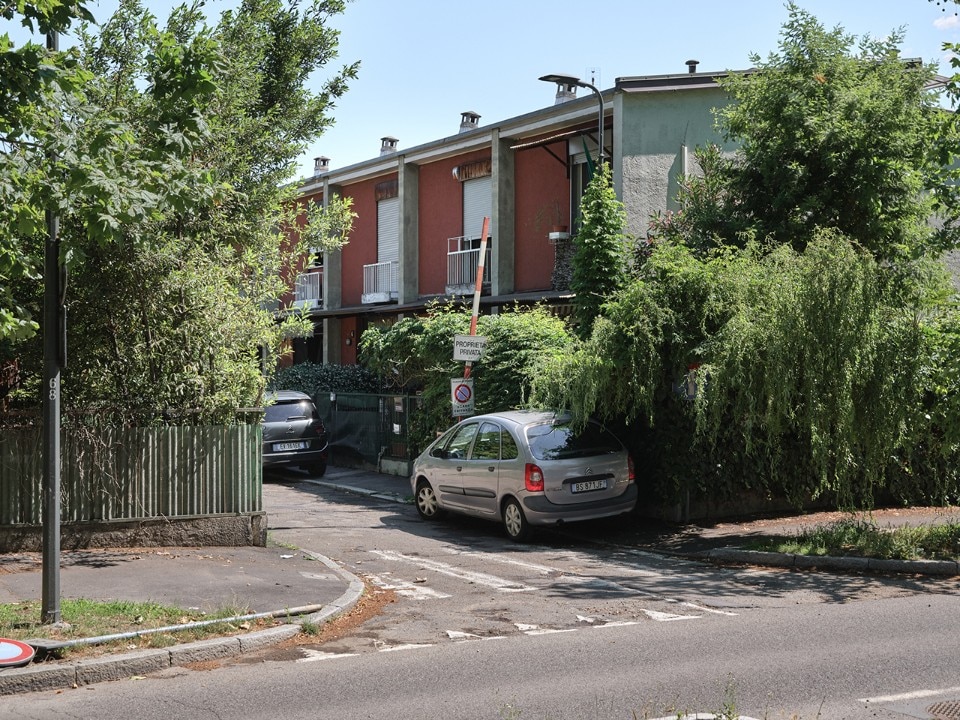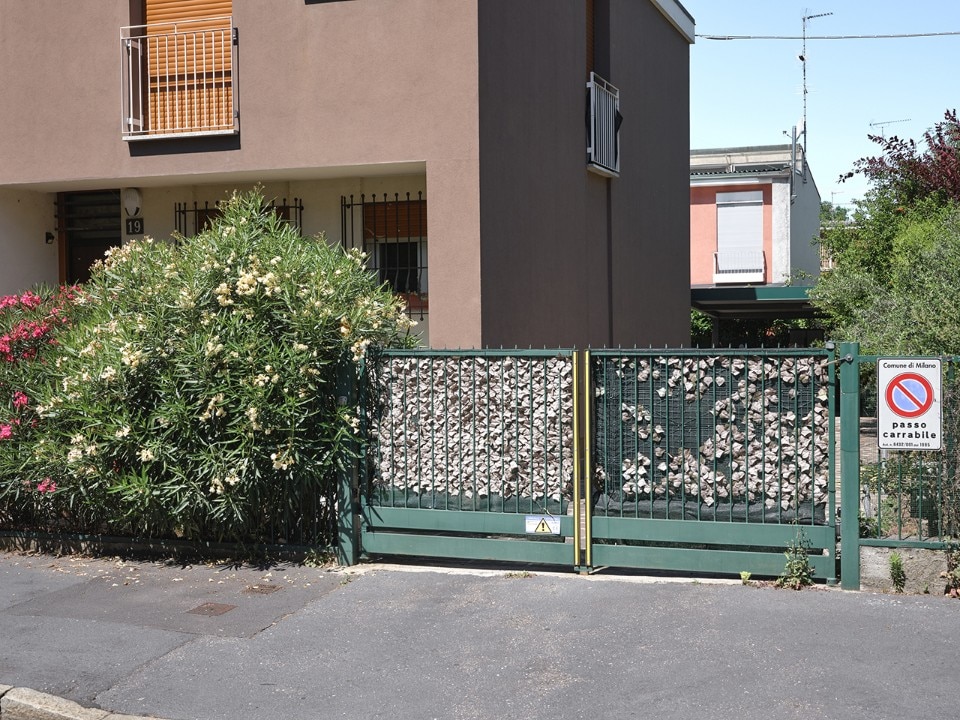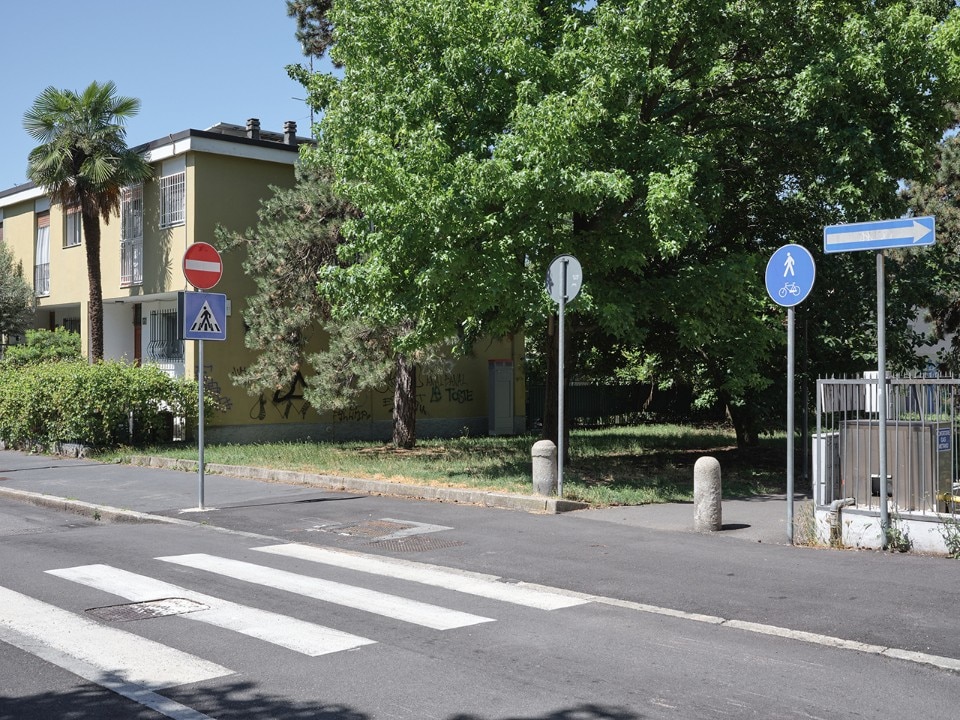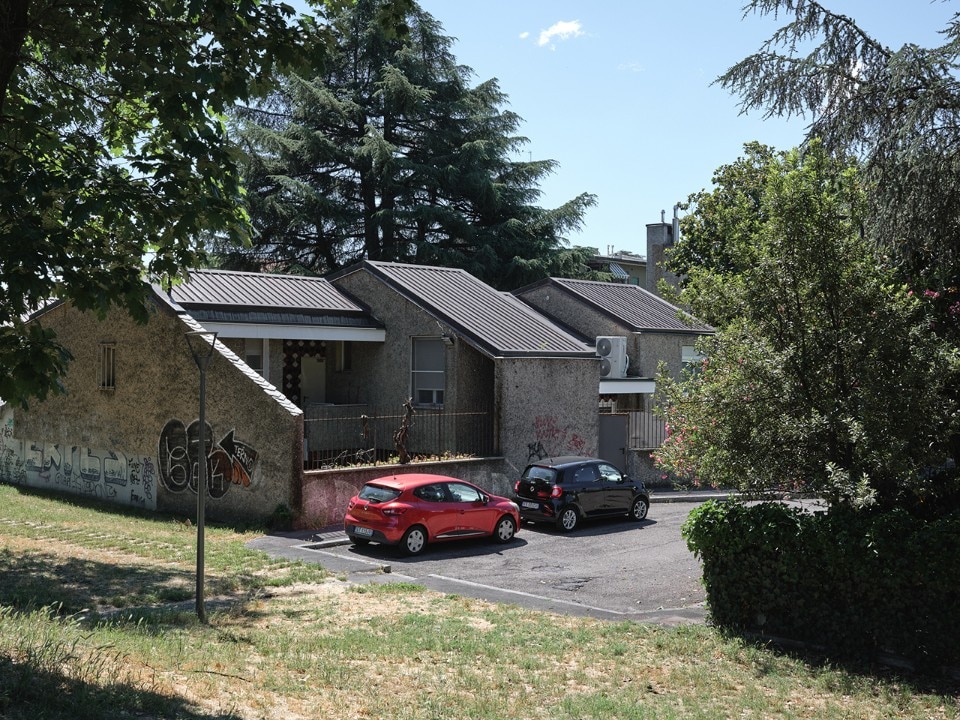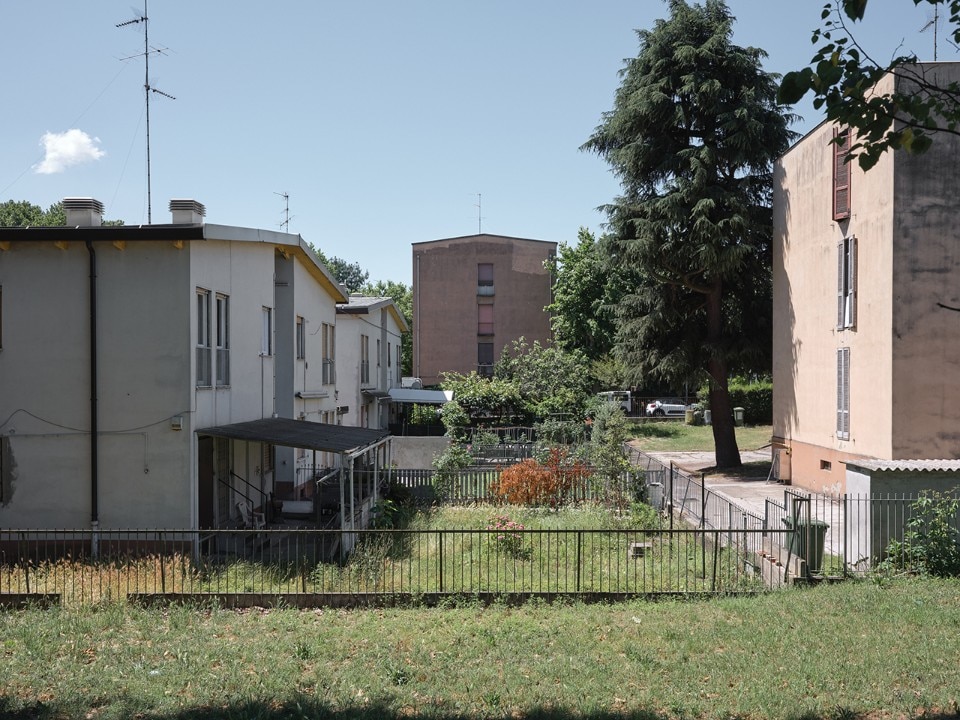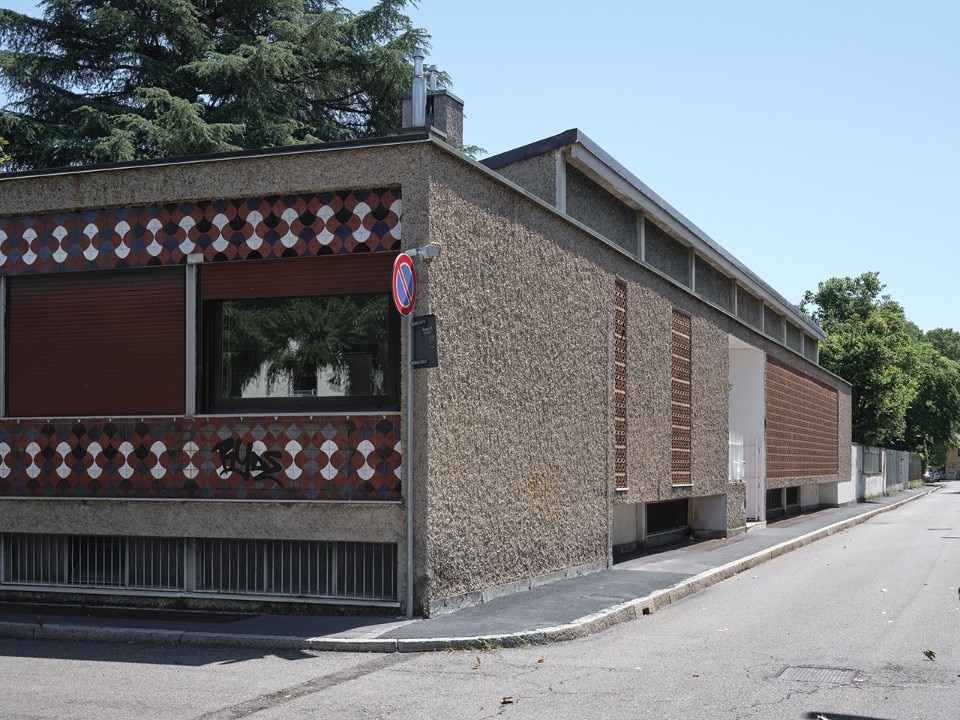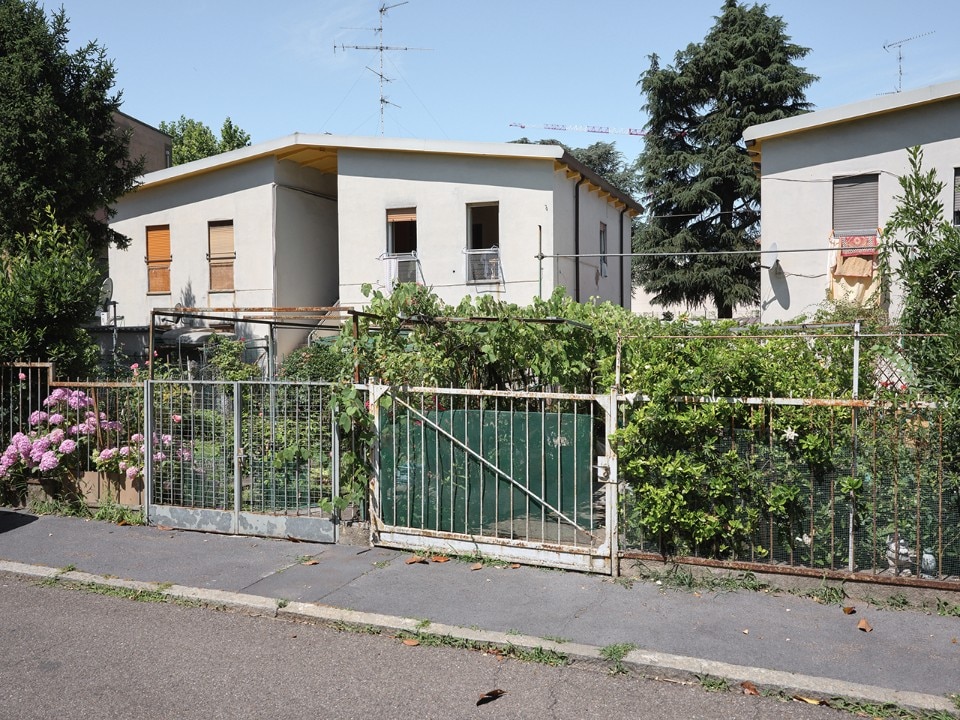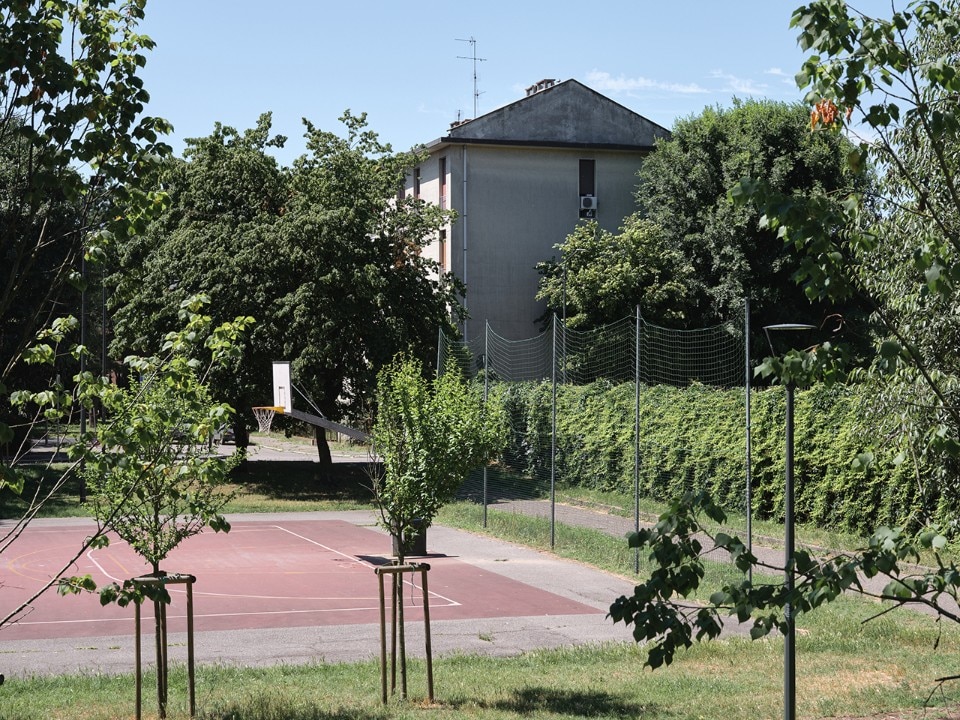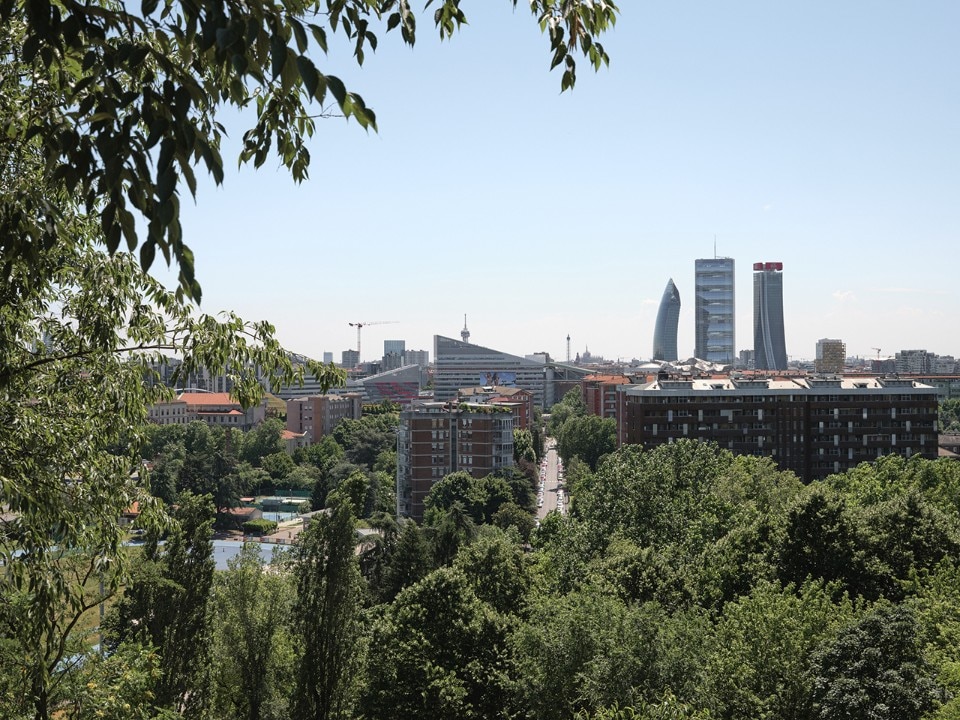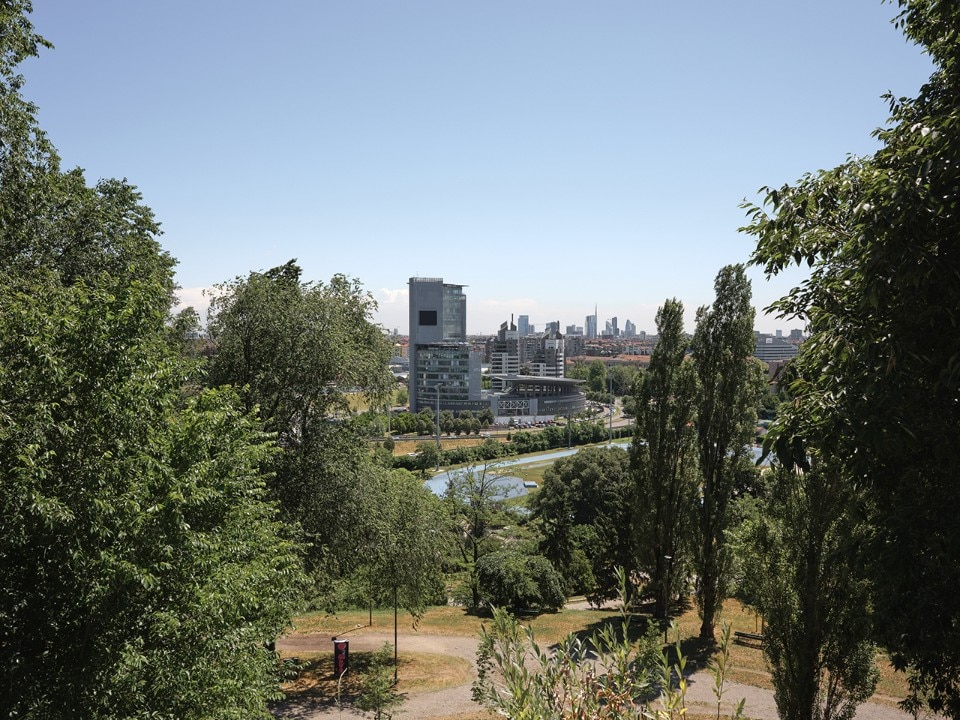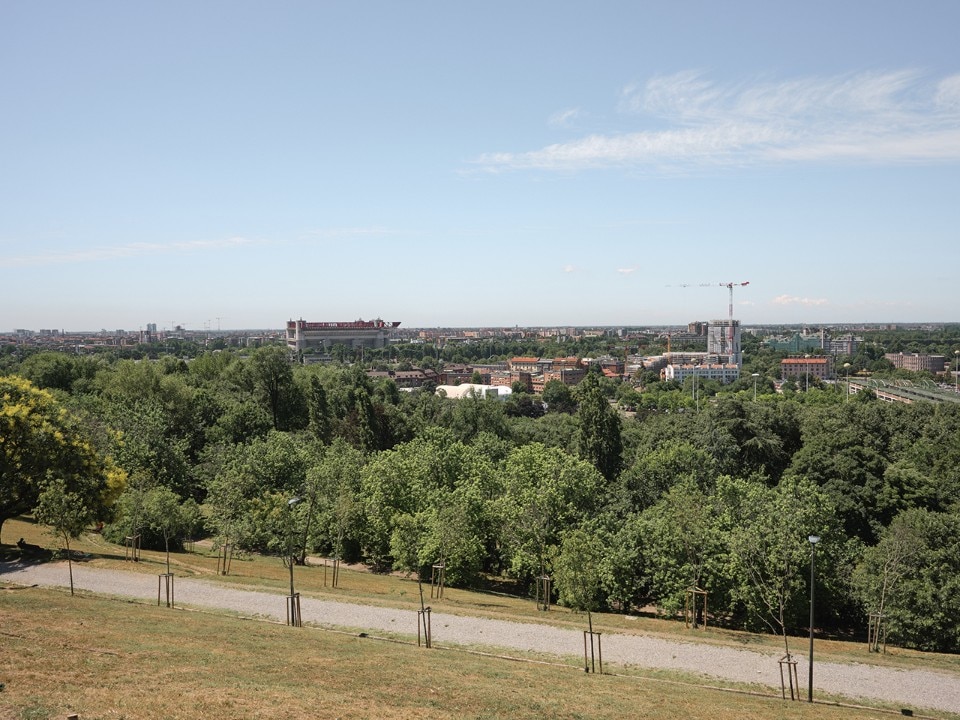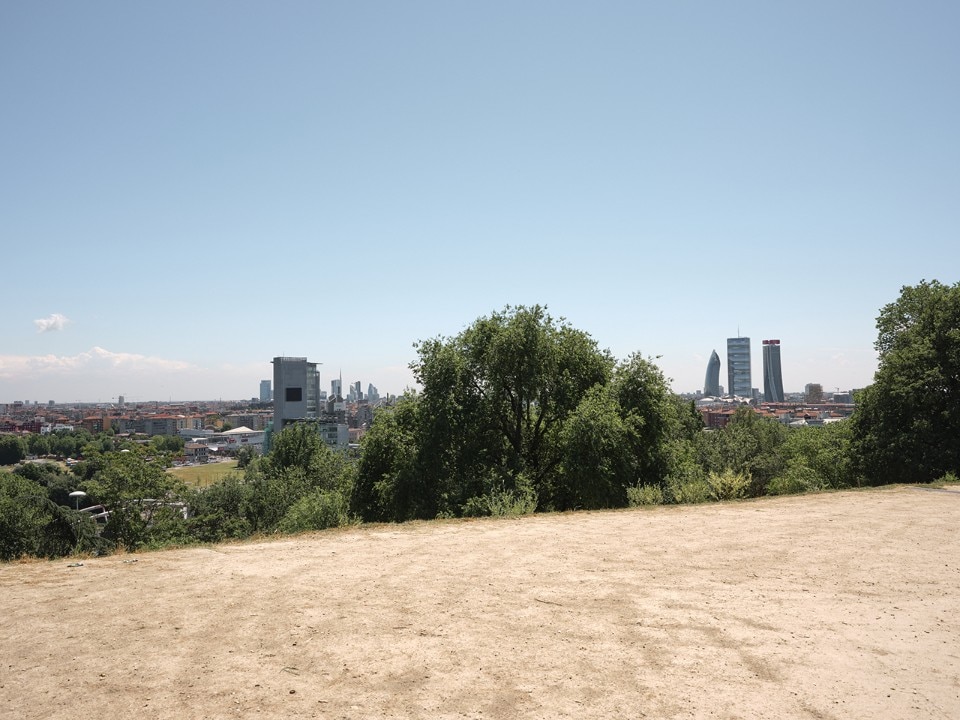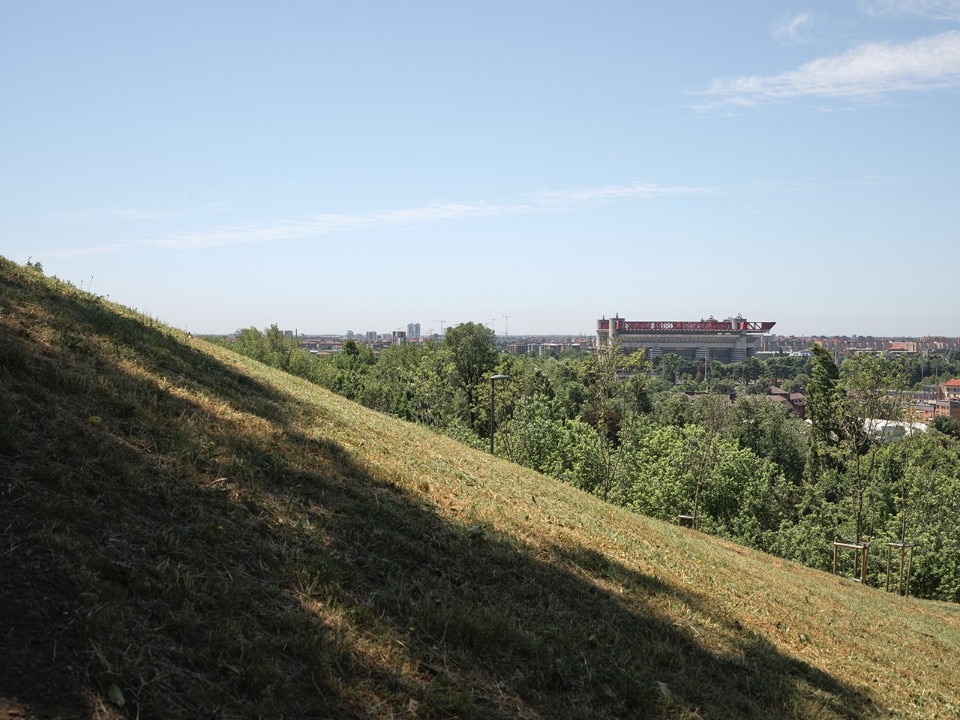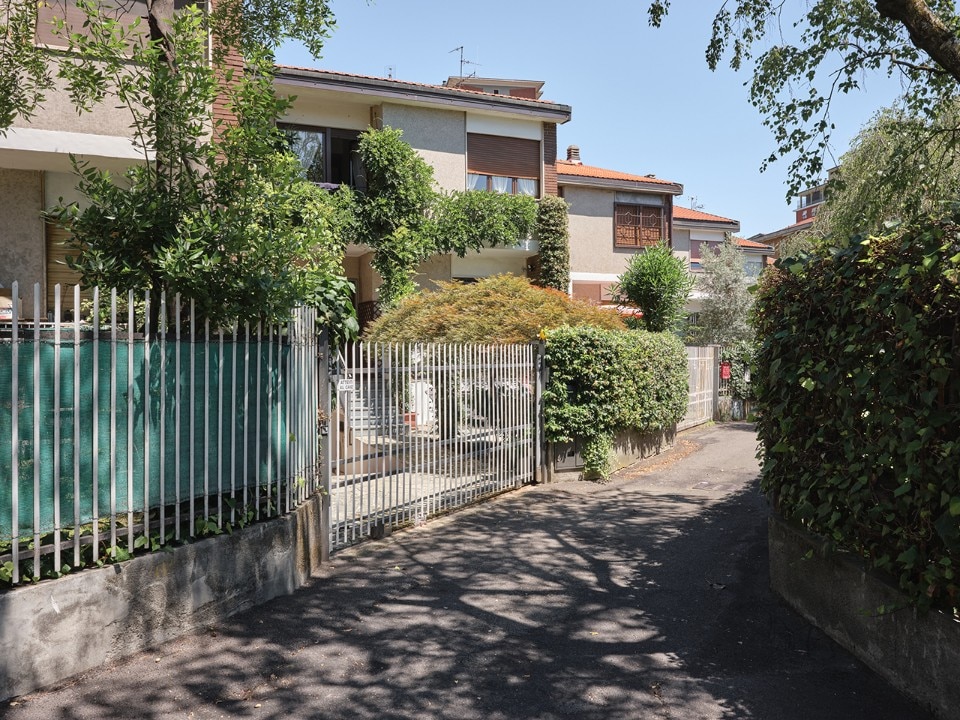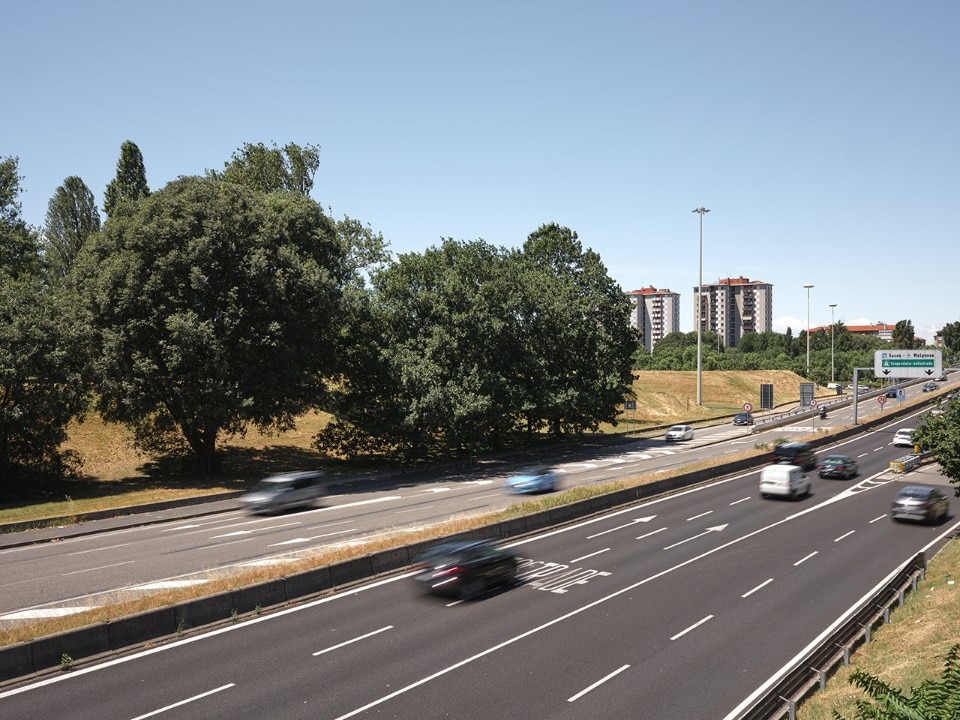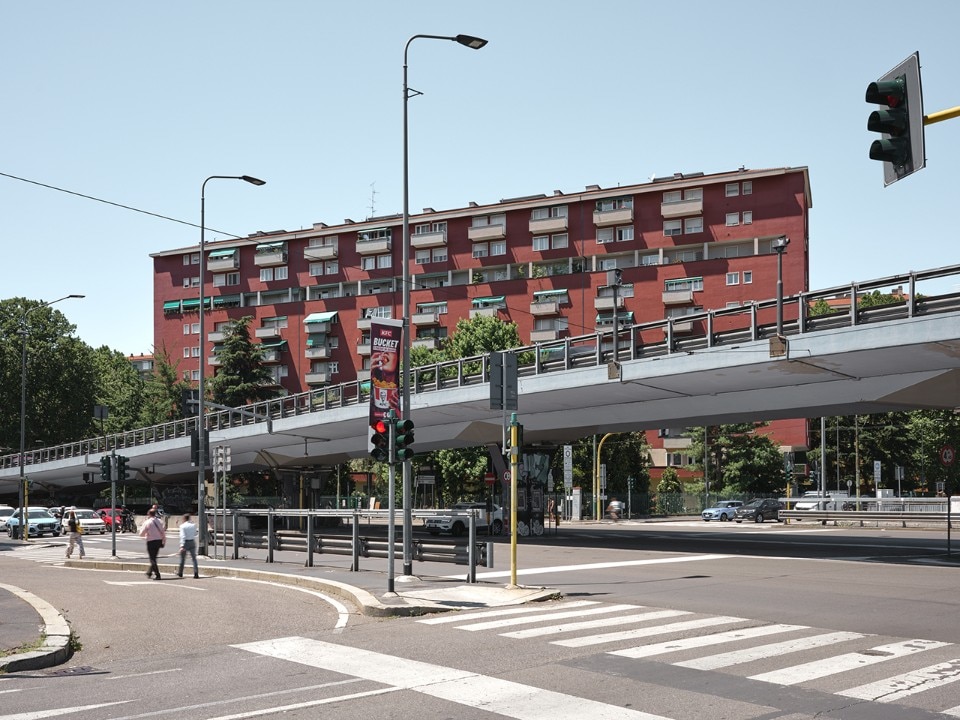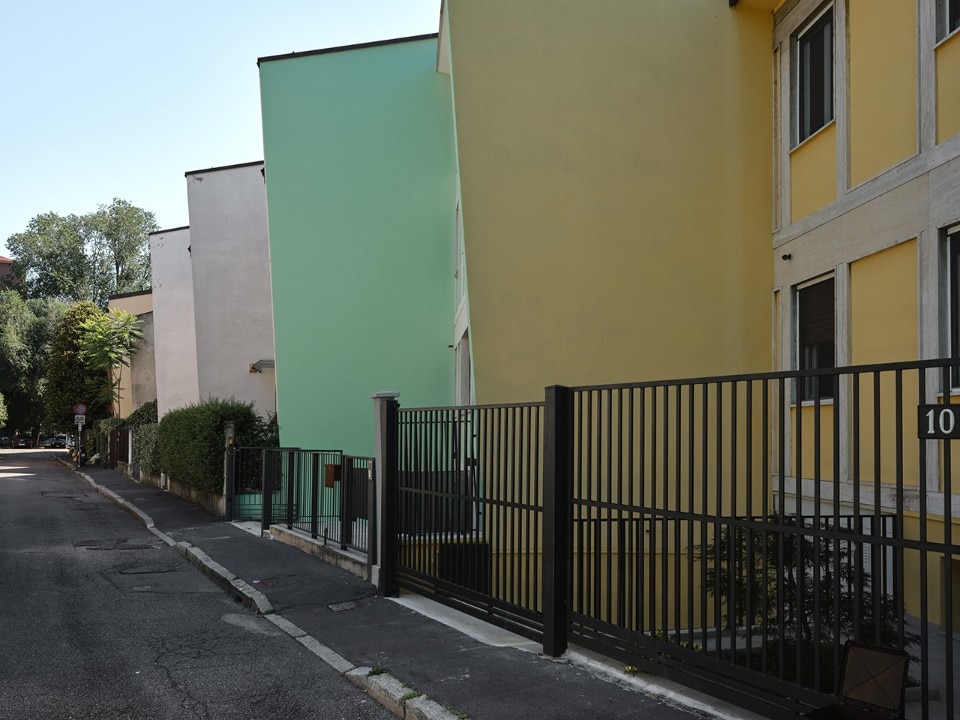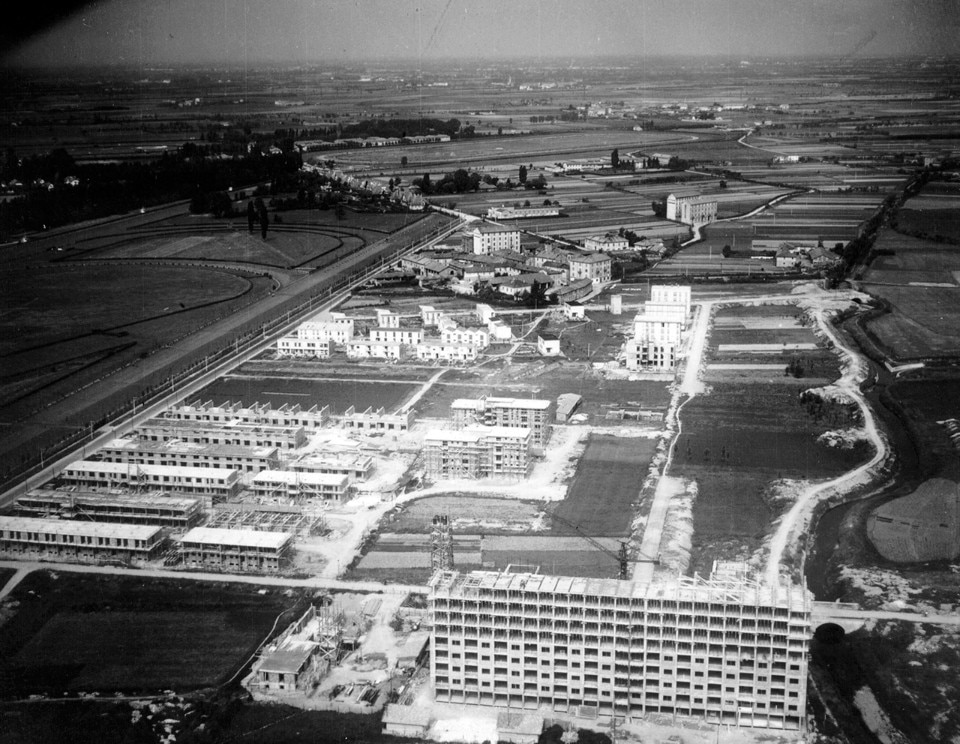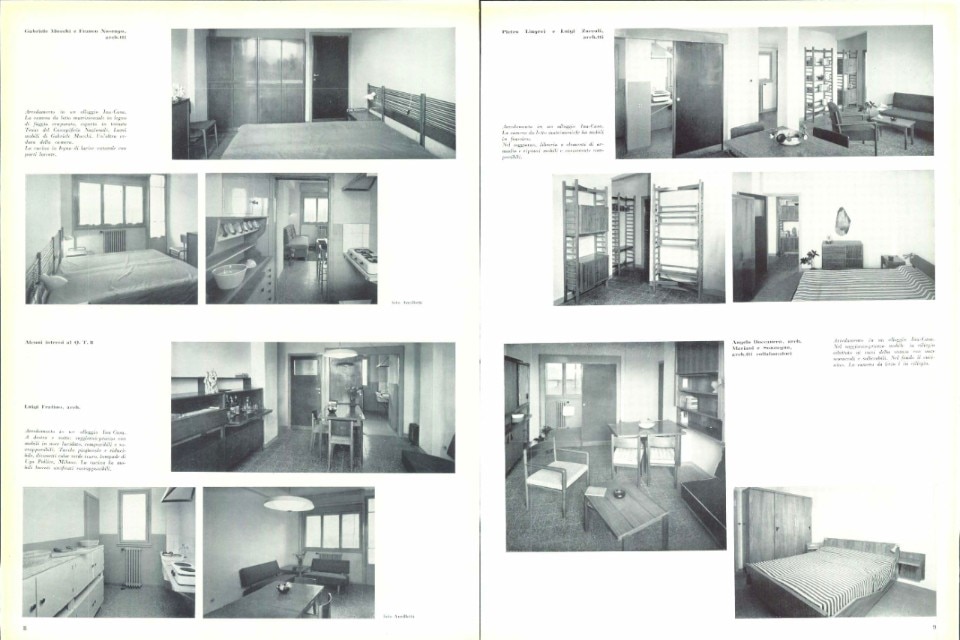With its 45-metre height, Milan’s Monte Stella is the only real presence of geographical scale in a city devoid of landscape – no rivers or seas, no mountains or hills. The Navigli themselves are too narrow and full of buildings to evoke the large scale. Built starting in the late 1940s – with the rubble from World War II bombings, as well as a lot of material from the Spanish ramparts, whose demolition was being completed – Monte Stella is the most extraordinary panoramic viewpoint over the city. Compared to the glazed halls of some skyscrapers, it offers a lower but more interesting panoramic viewpoint due to its suburban location, not immediately immersed in the urban fabric and therefore able to provide a more detached and global view.
With an overall area of 37 hectares facing the entire metropolitan city, Monte Stella is also the main public space serving the QT8 district, which extends southwards and eastwards from its slopes. The history of QT8 fits into that of the post-war reconstruction of Milan as well. In fact, it is probably one of the most ambitious, cultured and ultimately successful events of the time. QT8 is an acronym for Quartiere Triennale Ottava, because it was precisely for the eighth edition of the Milanese exhibition, in 1947, that the group of planners led by Piero Bottoni (1903-1973) develop its first plan. QT8 is a housing district that was created to meet a practical need: rehousing the evacuees of the conflict. However, it is immediately charged with a broader cultural value. It wants to represent a model, a precedent of quality for the urban expansion of the Lombard capital, an intensification of which was already foreshadowed to occur shortly thereafter.

 View gallery
View gallery
Bottoni was one of the most convincing interpreters of Italian modernism in the 1920s and 1930s, when was developed amongst other things such an avant-garde project as that for “Milano Verde” – elaborated in 1938 by a large group, following Giuseppe Pagano. To the gigantism and uncompromising rationalism – at least on a planimetric level – of this uncompleted proposal, which imagined a city of slabs oriented according to the heliothermic axis, QT8 opposes a more complex approach. The plan of the new district reveals the revival of “organic” urban models from England and Scandinavia. An underlying “humanism” – seen as attention to the human being, the end user – is identified in the increase in housing types and the smaller scale of its buildings, but also the desire to deal with different housing needs effectively and pragmatically.

 View gallery
View gallery
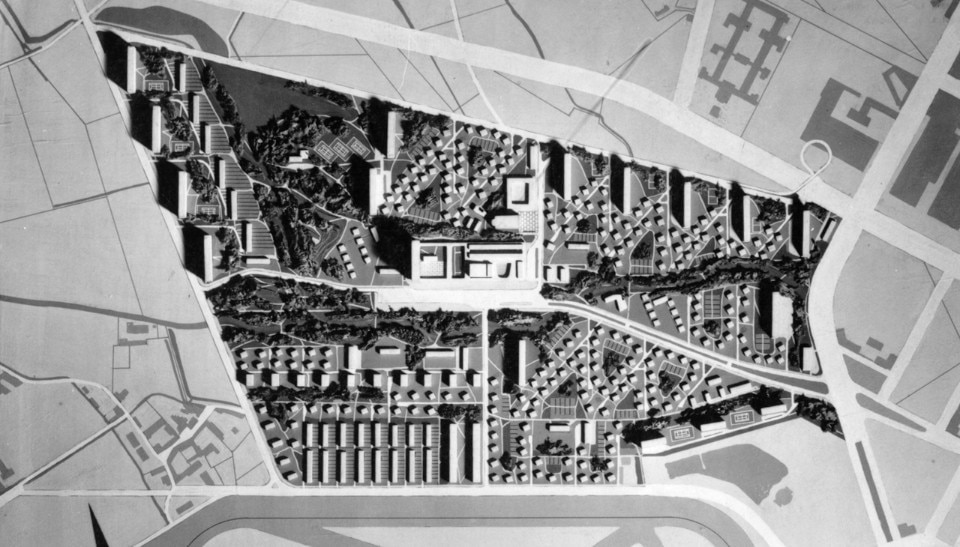
Overhead view of the maquette for the QT8 neighborhood’s first design. Courtesy Archivio Piero Bottoni
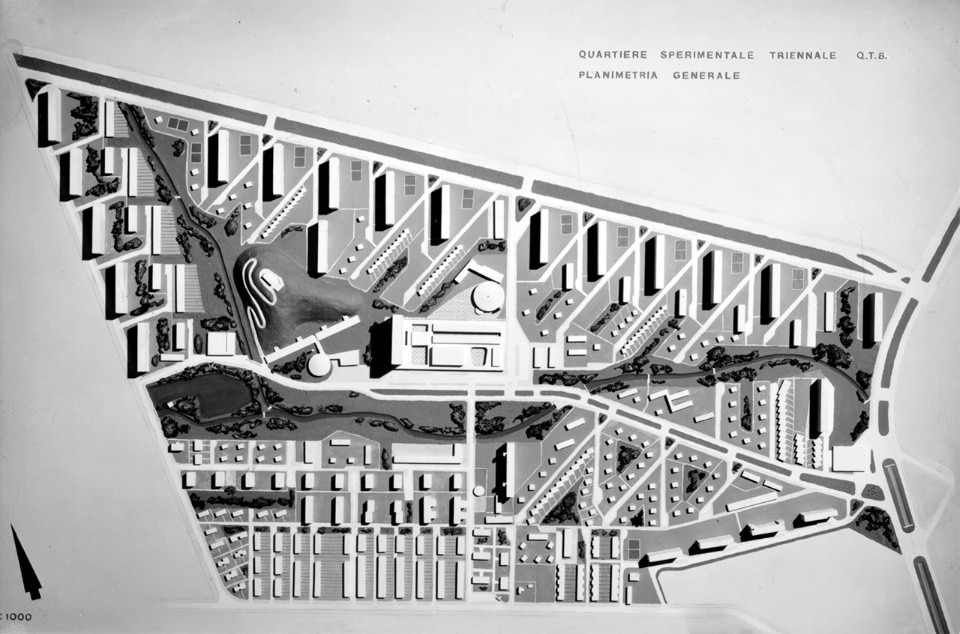
Overhead view of the maquette for the QT8 neighborhood’s second design. Courtesy Archivio Piero Bottoni
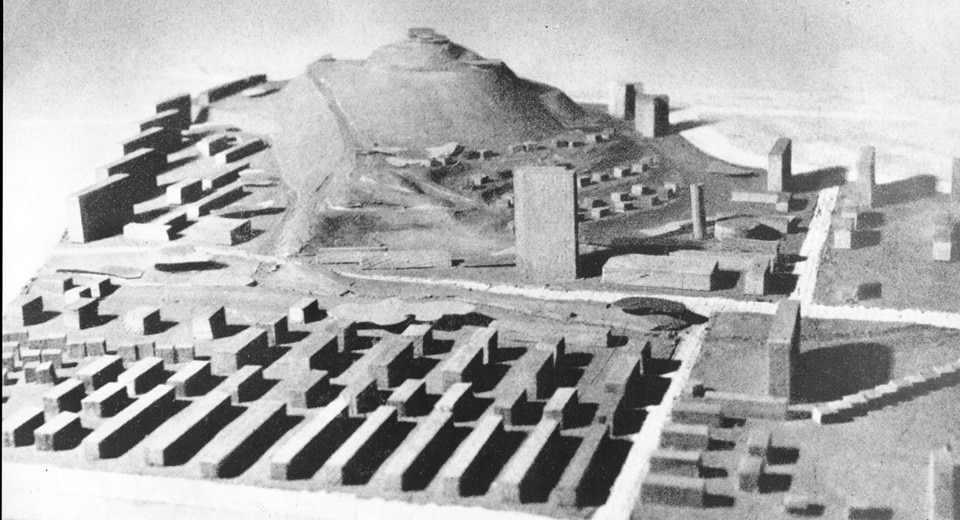
The maquette for the QT8 neighborhood with a detail of the Monte Stella, 1950. Courtesy Archivio Piero Bottoni
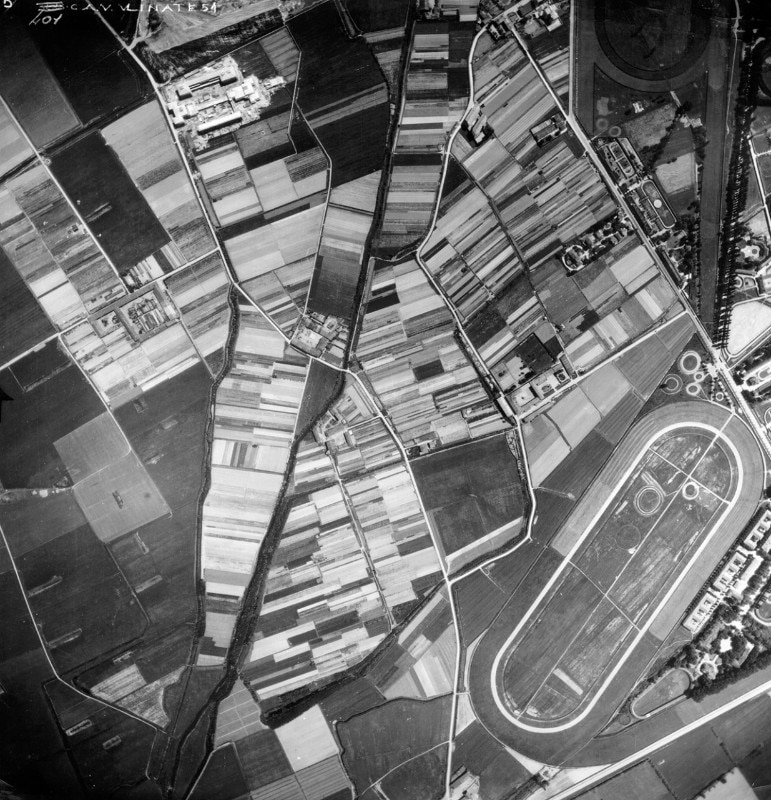
Aerial view of the area of the QT8 before its construction, 1951. Courtesy Archivio Piero Bottoni

Overhead view of the maquette for the QT8 neighborhood’s first design. Courtesy Archivio Piero Bottoni

Overhead view of the maquette for the QT8 neighborhood’s second design. Courtesy Archivio Piero Bottoni

The maquette for the QT8 neighborhood with a detail of the Monte Stella, 1950. Courtesy Archivio Piero Bottoni

Aerial view of the area of the QT8 before its construction, 1951. Courtesy Archivio Piero Bottoni
Thus, in the QT8, there are large-scale buildings, dwelling houses of just a few flats, and again rows of buildings differing in size and the way their modules are combined – designed by Bottoni himself, Roberto Menghi, Ettore Sottsass, Gabriele Mucchi and many others. Taken together they form a real catalogue of residential types, complemented by the public and service buildings, intended to ensure an ideal self-sufficiency of the district. Indeed, the city was not far away even at that time, but it was mainly an industrial periferia, and the subway would only appear more than a decade later. The Church of Santa Maria Nascente (1947-1955) – by Vico Magistretti in collaboration with Mario Tedeschi – stands out for the peculiarity of its central plan solution and above all for the dryness of its language, bare and almost industrial, with the concrete structure left exposed on the façade, but not exhibited. It is the bare and rigorous temple of a part of the city in which every building is realised with optimisation in mind, not luxury, and testifies it through the simplicity of its aesthetics.
On a technical-technological level, moreover, QT8 is one of the few Italian attempts to use industrial prefabrication on a large scale. Practically all the major plans for housing that were launched on a local and national scale in the following decades – in particular the INA Casa plan promoted by Amintore Fanfani – privileged the use of ordinary techniques. It is the only option to involve in the operations a building sector with essentially artisan skills and inert to change.
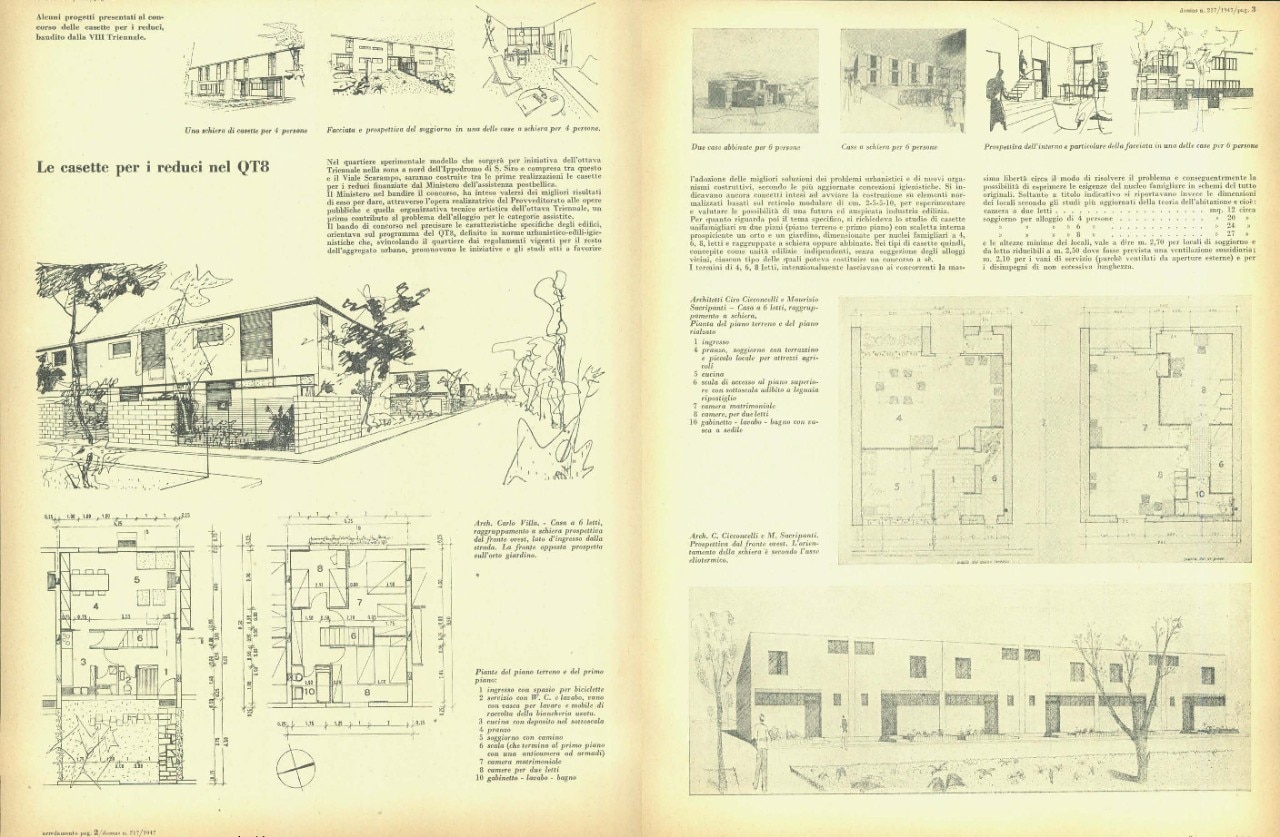
 View gallery
View gallery

“Le casette per i reduci del QT8”, in Domus n. 217, January 1947. Source: Domus Archives
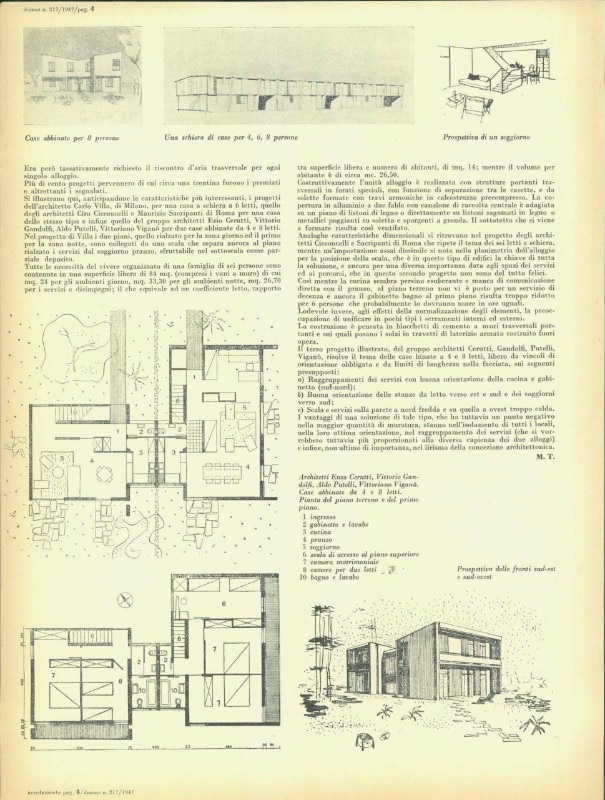
“Le casette per i reduci del QT8”, in Domus n. 217, January 1947. Source: Domus Archives
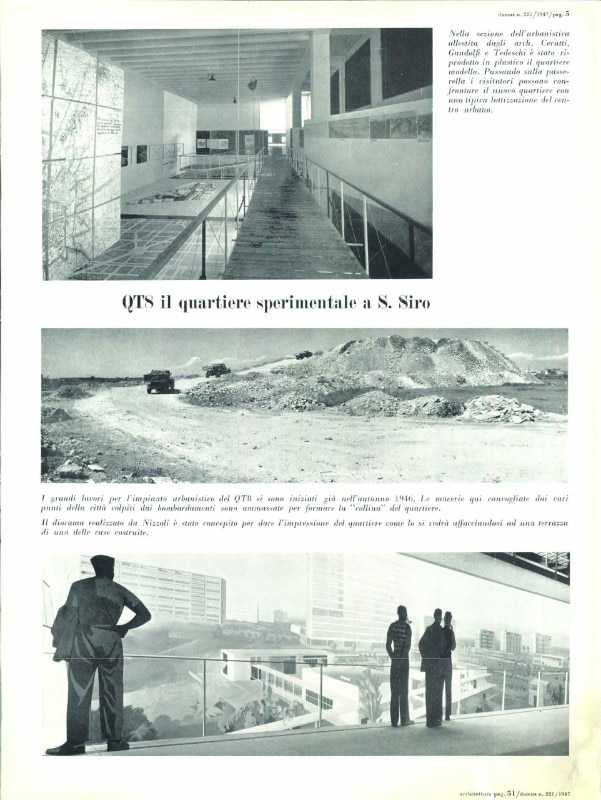
“QT8. Il quartiere sperimentale a San Siro”, in Domus n. 221, July 1947. Source: Domus Archives
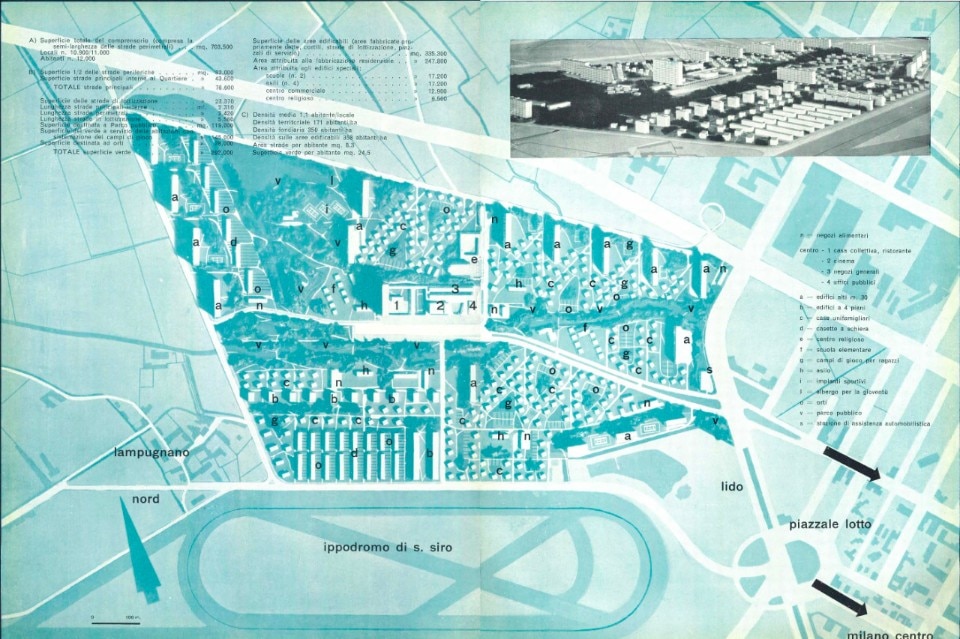
“QT8. Il quartiere sperimentale a San Siro”, in Domus n. 221, July 1947. Source: Domus Archives
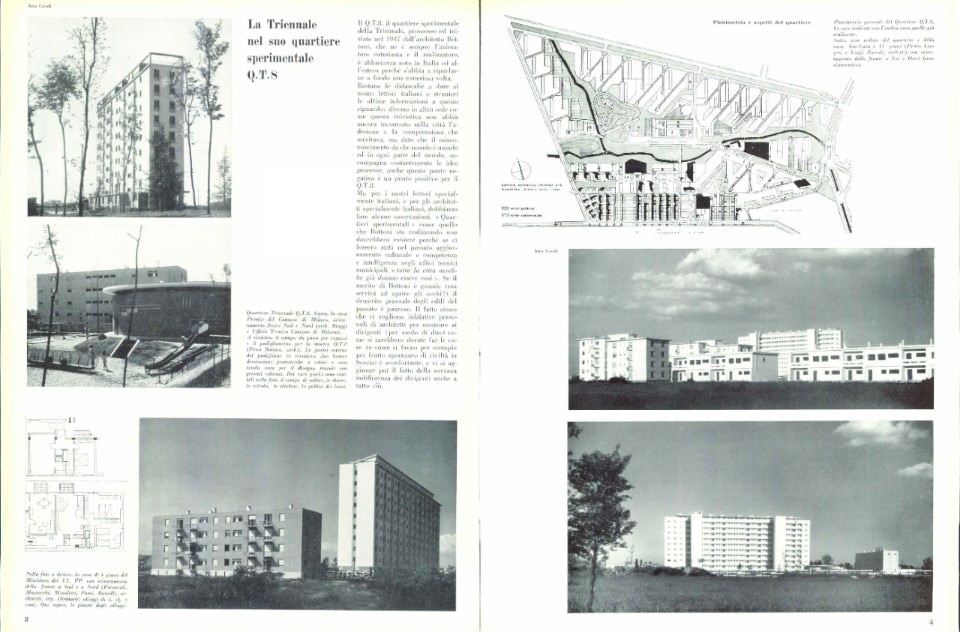
“La Triennale nel suo quartiere sperimentale QT8, in Domus n. 263, ottobre 1951. Source: Domus Archives
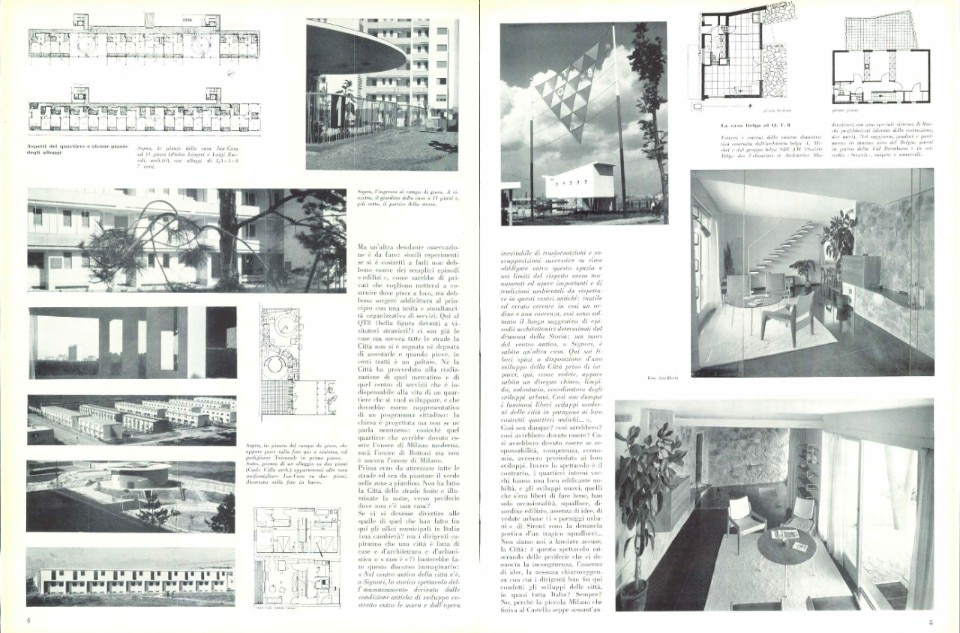
“La Triennale nel suo quartiere sperimentale QT8, in Domus n. 263, ottobre 1951. Source: Domus Archives
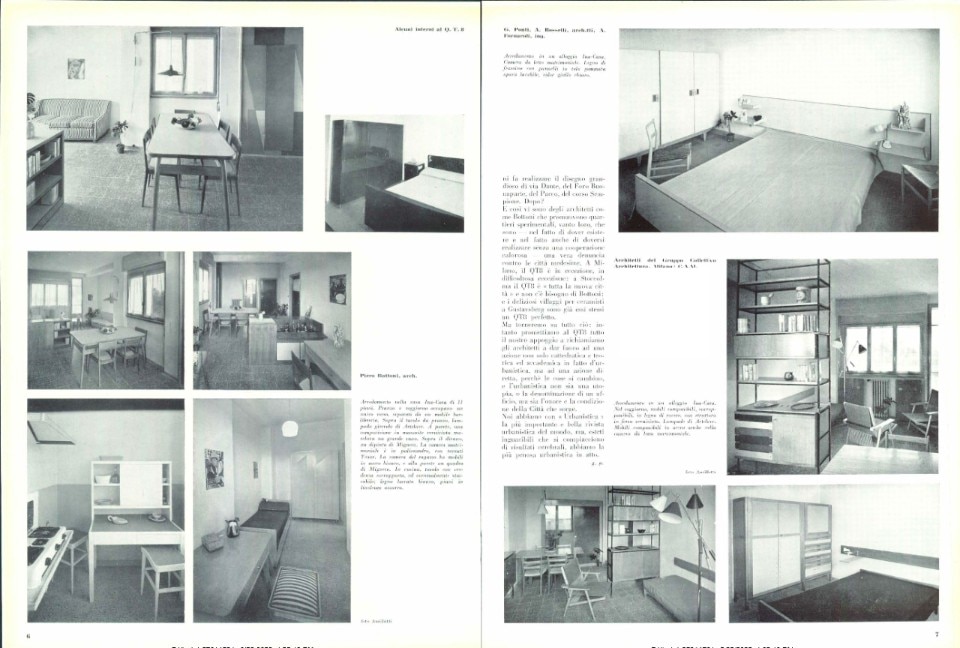
“La Triennale nel suo quartiere sperimentale QT8, in Domus n. 263, ottobre 1951. Source: Domus Archives

“Le casette per i reduci del QT8”, in Domus n. 217, January 1947. Source: Domus Archives

“Le casette per i reduci del QT8”, in Domus n. 217, January 1947. Source: Domus Archives

“QT8. Il quartiere sperimentale a San Siro”, in Domus n. 221, July 1947. Source: Domus Archives

“QT8. Il quartiere sperimentale a San Siro”, in Domus n. 221, July 1947. Source: Domus Archives

“La Triennale nel suo quartiere sperimentale QT8, in Domus n. 263, ottobre 1951. Source: Domus Archives

“La Triennale nel suo quartiere sperimentale QT8, in Domus n. 263, ottobre 1951. Source: Domus Archives

“La Triennale nel suo quartiere sperimentale QT8, in Domus n. 263, ottobre 1951. Source: Domus Archives
Even today, walking through QT8, visitors intuitively perceive that they are entering an atypical and clearly delimited part of the city. This is so since it is surrounded by large infrastructures – the Autostrada dei Laghi, the hippodrome, the Lido – and other equally self-enclosed districts such as Portello, but above all because even a less experienced eye is amazed by its “rarefied” atmosphere, the generosity of its empty spaces full of greenery and district micro-equipment, the silence of its traffic-free streets and, finally, in front of Monte Stella, a placid green monument. QT8 is not a perfect district and much can be said about its shortcomings, but few other parts of the 20th century city can boast such a combination of ordinary qualities and extraordinary features.


